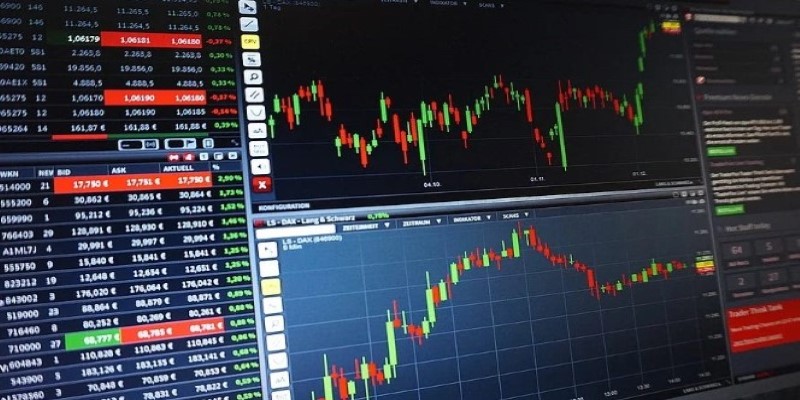Navigating the financial markets is both a science and an art, and traders are always on the lookout for tools that provide deeper insights into market behavior. One of the most critical tools used by both novice and seasoned traders is the order book. Closely related to this is the Depth of Market (DoM), a real-time display of market orders that helps in understanding liquidity and market trends.
These tools not only show the current buy and sell orders but also provide valuable data on supply and demand. In this article, we will explore what an order book is, how it operates, and the importance of DoM in trading.
What is an Order Book?
An order book is essentially a digital ledger of buy and sell orders for a particular security or asset, organized by price levels. It provides a transparent view of where market participants are willing to transact, displaying bids (buy orders) and asks (sell orders) in real time.
Traders use this tool to get a snapshot of the supply and demand dynamics for an asset. Buy orders (bids) are typically listed on one side, sorted by highest price first, while sell orders (asks) appear on the opposite side, sorted by lowest price first. This balance between buy and sell orders represents the current equilibrium of the market, which determines the assets price at any given moment.
The Operating Principle of the Order Book
The order book functions based on a straightforward principle: it lists all pending limit orders. These are orders placed by traders to buy or sell an asset at specific prices. When a buy order matches a sell order at the same price, a trade is executed, and both orders are removed from the book.

For instance, if a trader is willing to sell shares of a stock for $50 and another is looking to buy at the same price, the trade is completed. The order book is dynamic, constantly updating with new orders, executed trades, and order cancellations.
There are two main types of data in an order book:
Level 1 Data: This displays the best available bid and ask prices, along with the total volume at each price point.
Level 2 Data: This offers a deeper view, showing multiple price levels for both buy and sell orders, providing a richer understanding of market depth and liquidity.
These levels are essential for different trading strategies. Level 1 data may suffice for quick trades, while Level 2 is more useful for traders who want to analyze the broader market and anticipate future price movements.
Depth of Market (DoM): A Closer Look
The Depth of Market (DoM) refers to the market's ability to sustain relatively large orders without significant price changes. It is essentially a visual representation of the order book but gives a more detailed picture of the volume of buy and sell orders at different price levels. The DoM helps traders understand how much liquidity is available in the market, indicating the potential ease or difficulty of buying or selling a large position without moving the market significantly.
DoM is displayed as a vertical ladder with prices in the center. On one side, you see the buy orders, and on the other side, the sell orders. The larger the number of orders at a particular price level, the more likely that price level represents strong support or resistance.
Practical Use of the Order Book and Depth of Market in Trading Strategies
The order book and Depth of Market (DoM) offer traders a detailed look at market activity, helping shape trading strategies. Here's a concise guide to their practical uses:
Scalping
Scalpers use the order book to detect brief liquidity gaps between buy and sell orders. By quickly executing trades within those gaps, they capitalize on small price differences, repeatedly making minor profits over a short time frame. Scalping requires precise timing and deep market analysis.
Momentum Trading
Momentum traders use the Depth of the Market to spot order flows that signal potential breakouts. When buy orders accumulate, traders anticipate rising prices and enter long positions. Conversely, increasing sell orders indicate a downward trend. These traders rely on rapid market shifts for quick profits.
Reversal Trading

Reversal traders rely on the order book to identify key support and resistance levels. Large clusters of buy orders create support zones, while a concentration of sell orders suggests resistance. Traders use these insights to predict potential market reversals and place trades accordingly.
Liquidity Trading
Liquidity traders, including market makers, analyze order books to adjust their buy and sell prices. By continuously offering to buy at lower prices and sell at higher prices, they profit from the spread. Monitoring liquidity levels helps them minimize risk and avoid price manipulation.
Order Imbalances
Order imbalances occur when there is a significant disparity between buy and sell orders at a price level. This signals potential price movements. For example, a surge of buy orders relative to sell orders may indicate imminent upward price movement, providing traders with actionable insights.
Detecting Spoofing
Spoofing involves placing large orders to manipulate market perception, only to cancel them before execution. By monitoring sudden spikes in the order book followed by rapid cancellations, traders can detect and avoid falling victim to such manipulative practices, protecting their trades from false signals.
Conclusion
The order book and depth of market (DoM) are vital tools for understanding the underlying dynamics of the financial markets. They offer traders valuable insights into liquidity, market sentiment, and potential price levels. Whether you are a high-frequency trader or someone looking to make longer-term investments, mastering these tools can provide a significant edge.
By understanding how to read the order book and the depth of the market, traders can anticipate market moves with more confidence and make informed decisions that align with their trading strategies. In 2024, with increasingly advanced digital platforms, the real-time data provided by order books and DoM has become more accessible and crucial than ever for successful trading.







